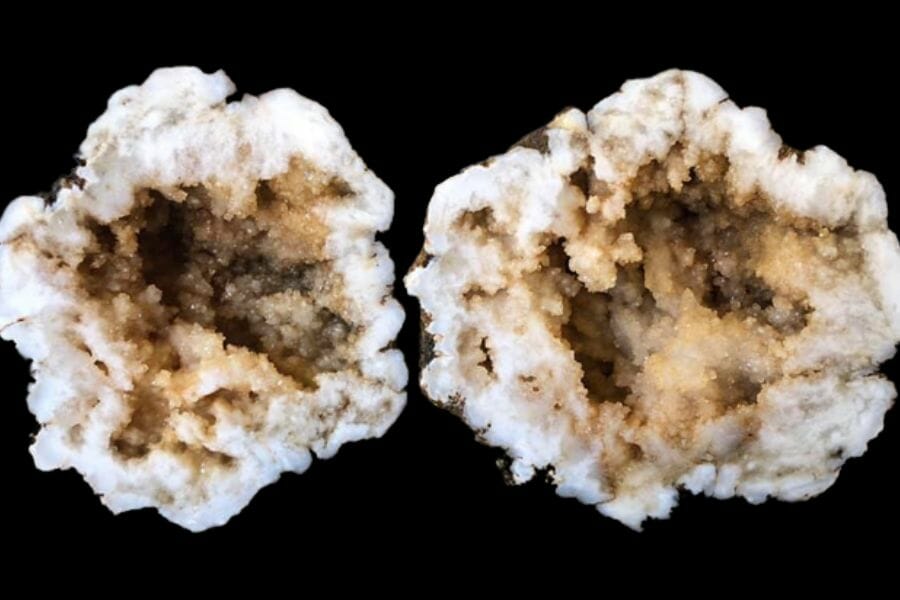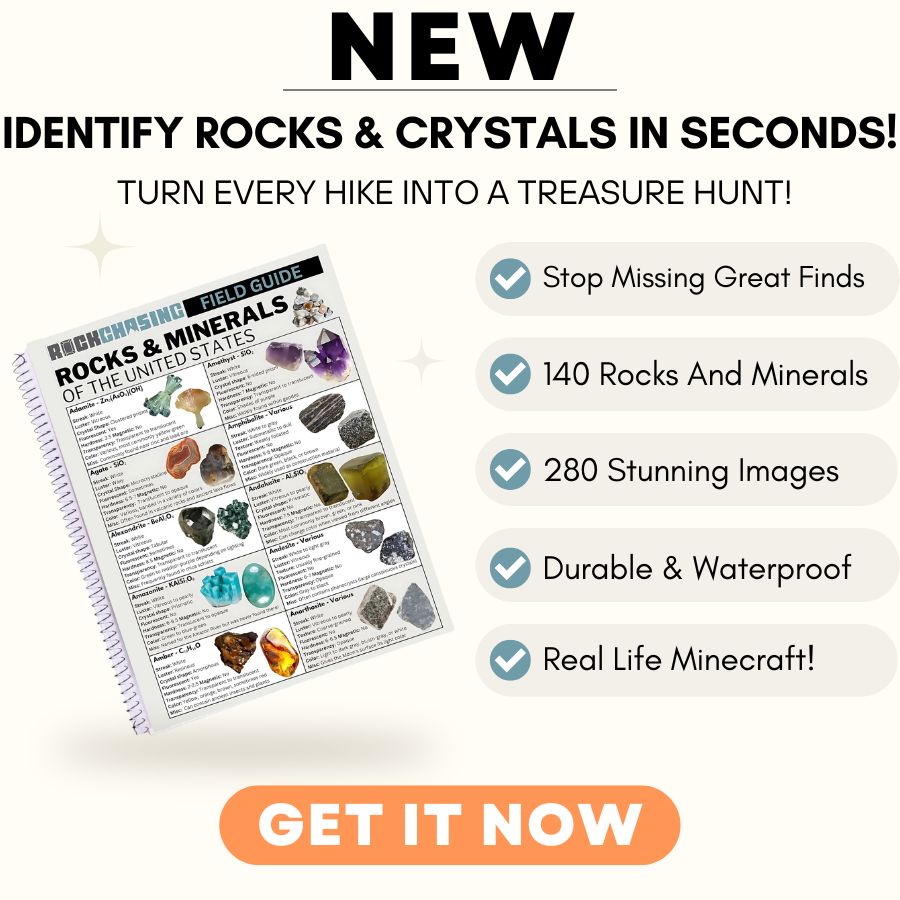Geodes are like nature’s surprise eggs, filled with sparkling crystals inside a plain-looking rock. Our state is a treasure trove for these hidden gems, with its many different landscapes that make it perfect for rock hounds.
If you’re itching to crack open your own crystal-filled wonder, you’re in the right place!
This article will show you the best spots in our state to find geodes. We’ll also share some handy tips to make your geode hunting adventure a success.
So grab your hammer and get ready to discover the beauty hiding in ordinary-looking rocks all around this state!
How Geodes From Here
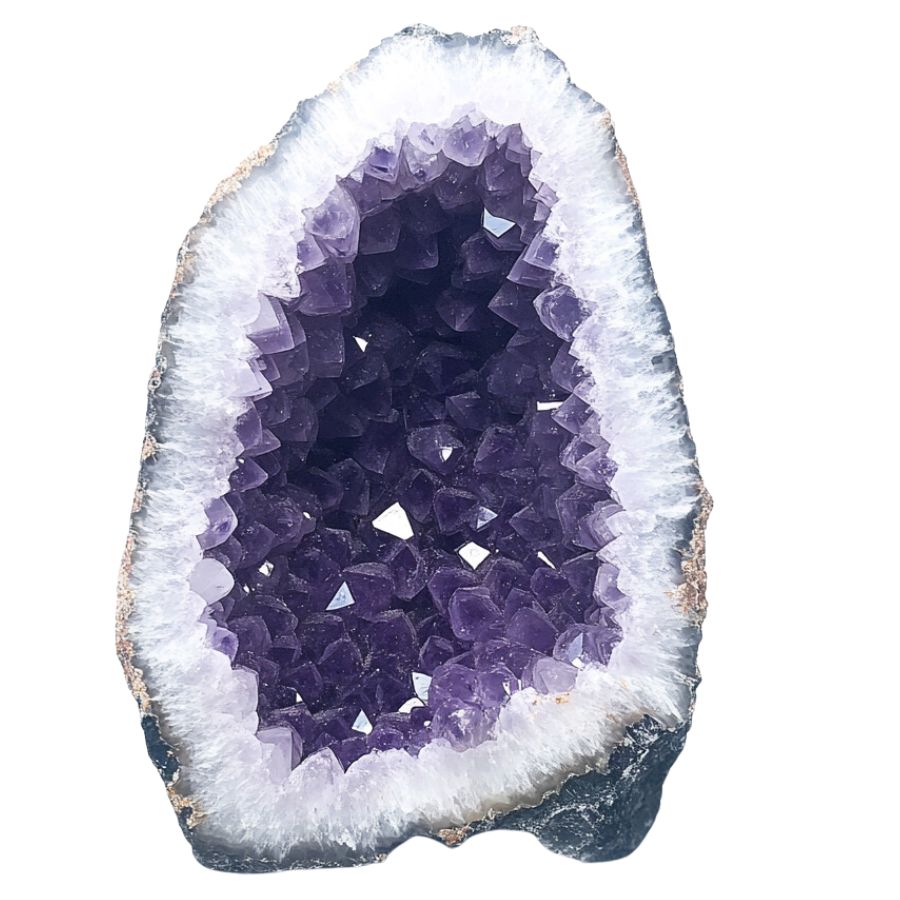
Geodes form when bubbles in volcanic rocks or spaces in sedimentary rocks get filled with minerals over time.
First, water rich in minerals like quartz or calcite seeps into the hollow space. As the water evaporates, it leaves behind the minerals, which slowly build up layer by layer.
Eventually, these minerals create a crystal lining inside the geode. The outer shell stays rough, while the inside becomes a sparkling treasure.
The process can take thousands, even millions, of years, making each geode a unique and beautiful time capsule of Earth’s natural forces.
The Types Of Geodes Found in the US
There are many fascinating varieties of geodes that can be found across the United States, including in our own state. Each type is distinctly beautiful and intriguing:
Amethyst Geode
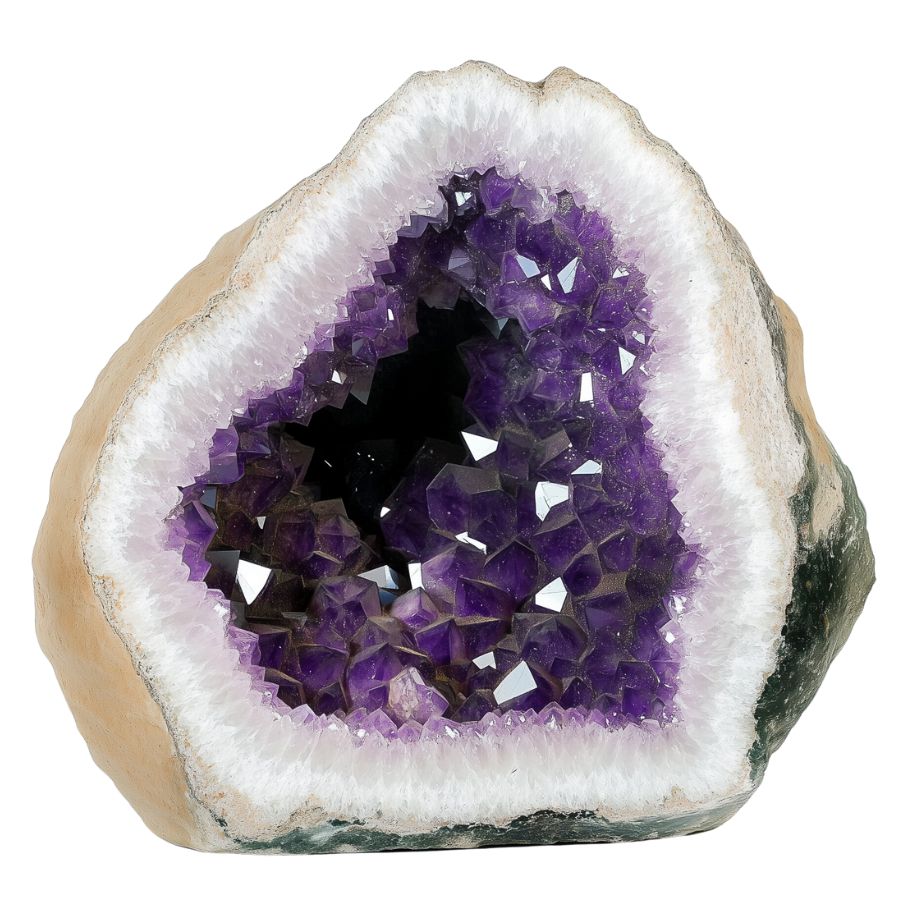
Amethyst geodes look plain on the outside, like a potato. But crack them open, and you’ll find stunning purple crystals. These crystals can be light lavender or deep purple.
The structure of crystals inside can vary widely. Some are tiny and densely packed, creating a sparkling surface. Others form large, distinct points that jut inwards.
The color range is impressive too, from pale lilac to deep royal purple. Some amethyst geodes develop unique features. “Stalactites” of amethyst might hang from the top.
In rare cases, you might find a water bubble trapped inside, a remnant from the geode’s formation millions of years ago.
Citrine Geode
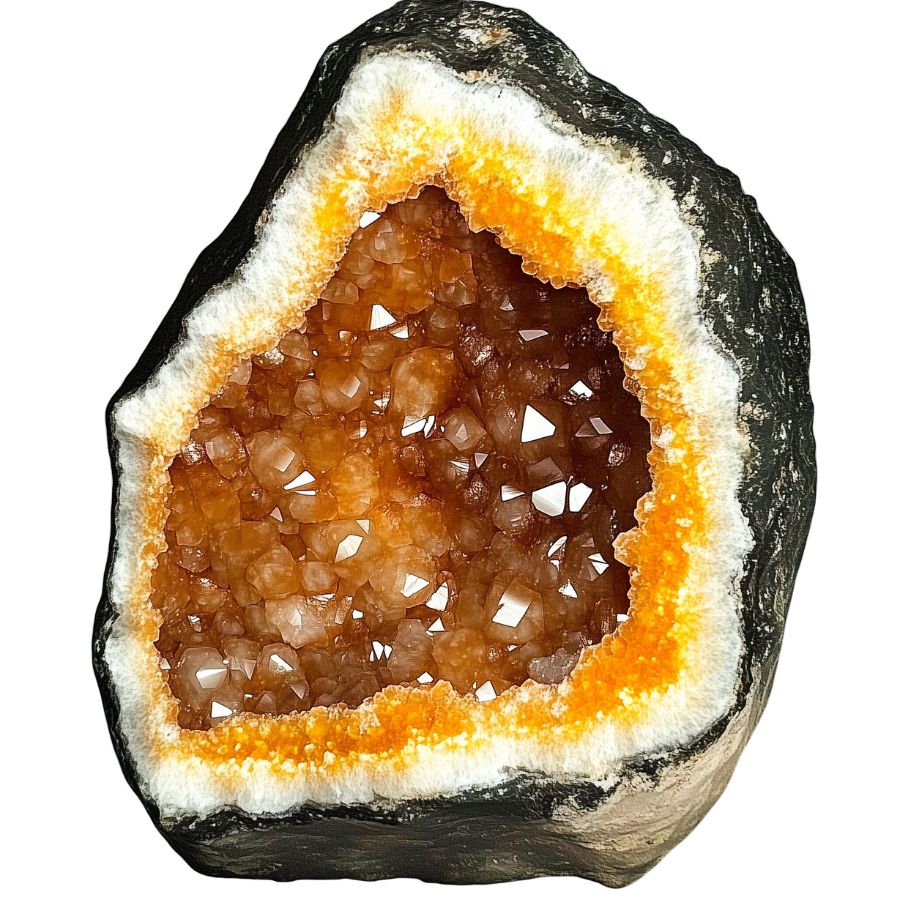
Citrine geodes are eye-catching rocks with golden yellow to orange crystals inside. They sparkle when light hits them, looking like sunshine trapped in stone. The colors come from iron mixed in with the quartz.
Unlike many gemstones, citrine’s color is often evenly distributed throughout the crystal.
Most citrine on the market isn’t natural. It’s actually heat-treated amethyst. This process turns the purple amethyst into vibrant citrine. Natural citrine is rarer and often has a more subtle color.
Pyrite Geode
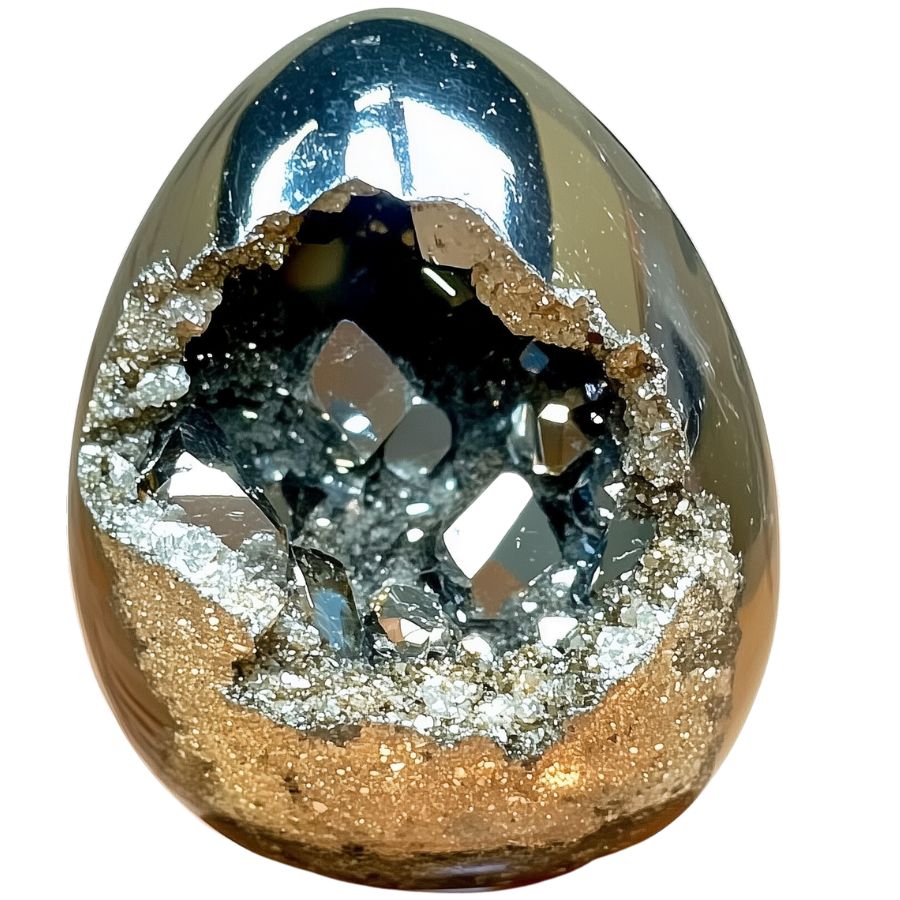
Ever cracked open a rock and found gold inside? Well, not real gold, but something that looks just like it. That’s a pyrite geode. Pyrite is called “fool’s gold” because it’s so shiny and golden.
Inside these geodes, pyrite forms in cool shapes. Sometimes it’s perfect cubes. Other times its clumps or even round balls called “pyrite suns”.
Pyrite has a fun history. People have been mixing it up with real gold for thousands of years. That’s how it got its nickname.
Selenite Geode
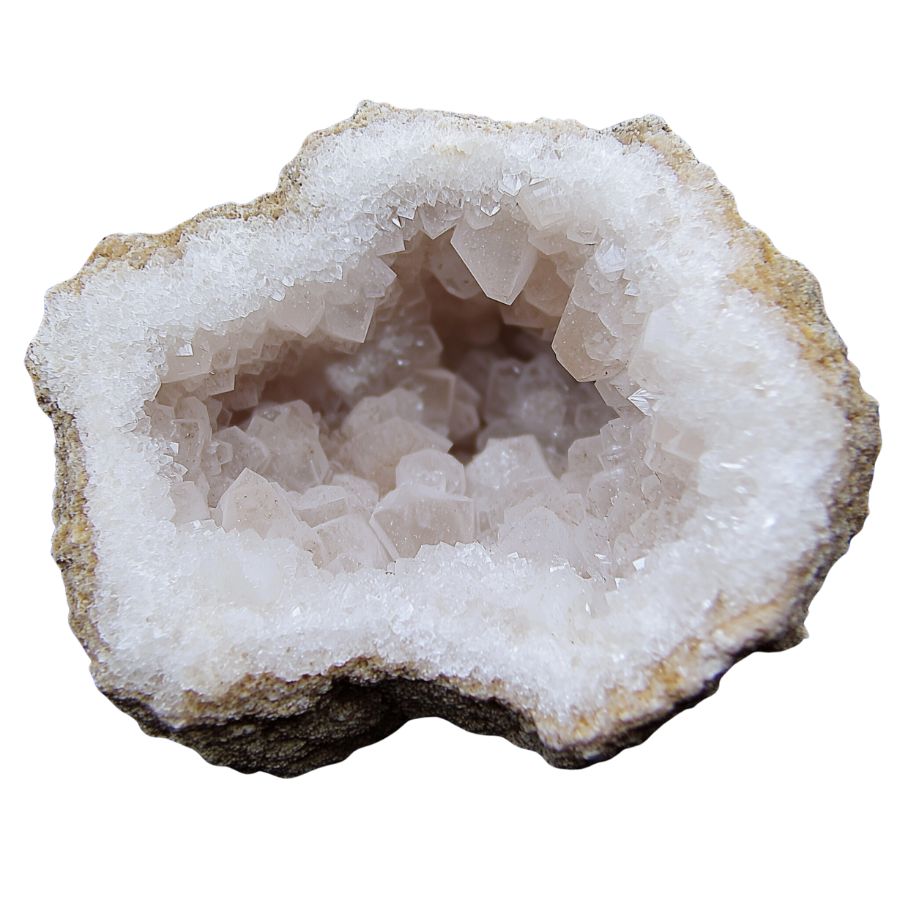
Selenite geodes stand out from the crowd. They’re white and see-through, with a glassy look. When you open one up, you’ll see crystals that look like they’re made of ice or moonlight.
Unlike harder geodes, selenite is soft. You can scratch it with your fingernail! This softness means you need to handle it carefully. But it also means selenite can be shaped into beautiful forms easily.
One cool thing about selenite is how it plays with light. Hold it up to a lamp, and you’ll see the light shine right through it. This makes selenite geodes popular for decorative lamps and light fixtures. They add a magical glow to any room.
Celestite Geode
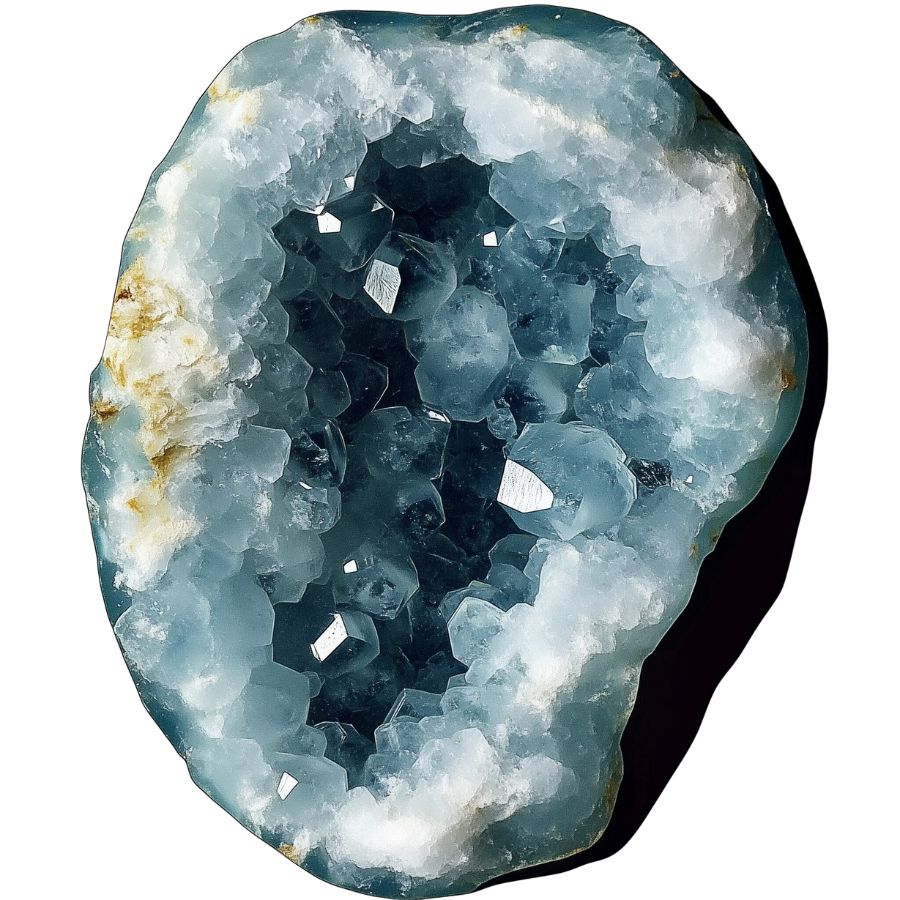
Celestite geodes are like pieces of sky trapped in rock. Their crystals are typically a delicate blue, ranging from almost colorless to deep sky blue. In rare cases, celestite can form in other colors. Pink celestite is highly prized by collectors.
One unique feature of celestite is its perfect cleavage. This means the crystals can be easily split into rhombohedral shapes.
These geodes form in a unique way. They start as nodules of a soft mineral called alabaster. Over time, this dissolves and is replaced by celestite crystals. Some celestite geodes are huge, like the famous Crystal Cave in Ohio.
Celestite isn’t just pretty to look at. It’s used to make strontium, an element with many uses. You’ll find strontium in fireworks, where it creates red colors. It’s also used in making TV screens and ceramics.
Jasper Geode
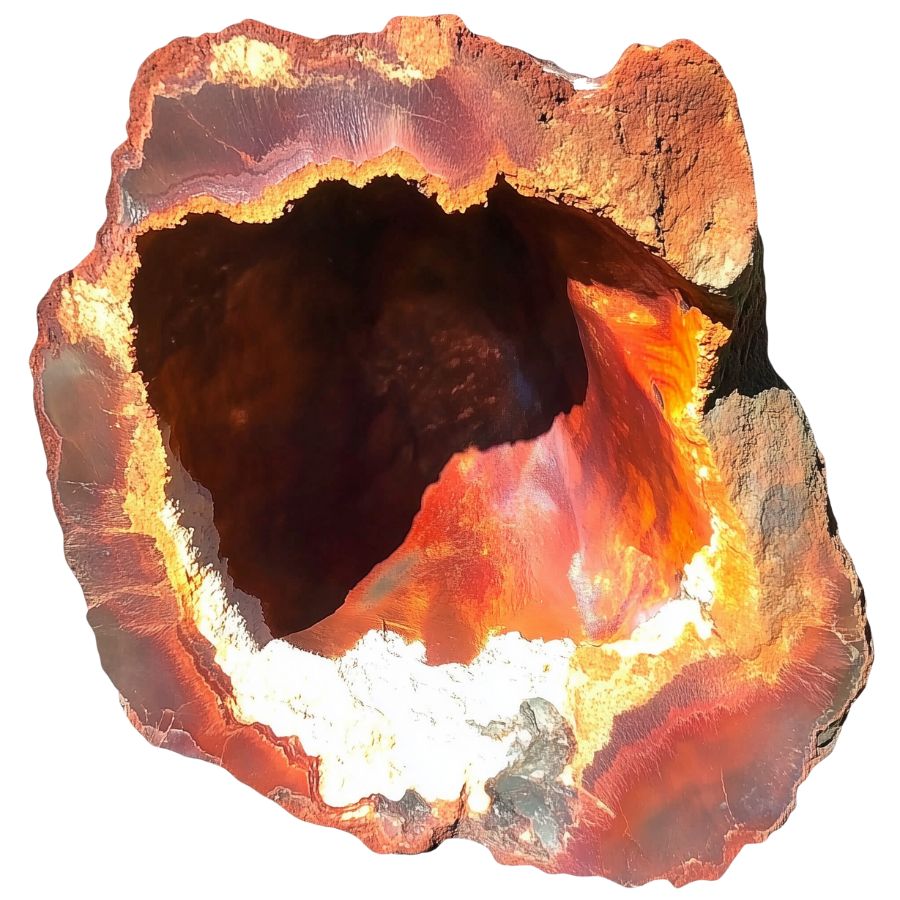
Jasper geodes are the chameleons of the mineral world. They can appear in almost any color, often with multiple hues in a single specimen. Patterns can range from solid colors to intricate swirls, bands, or spots.
One fascinating type is picture jasper. These geodes contain patterns that resemble landscapes, with “skies,” “mountains,” and “rivers” visible in the stone. Each one is like a miniature painting created by nature.
Some jasper geodes contain orbicular patterns – spherical structures that formed as the jasper solidified. These create eye-catching bull’s-eye or flower-like designs in the stone, making each piece truly one-of-a-kind.
Carnelian Geode
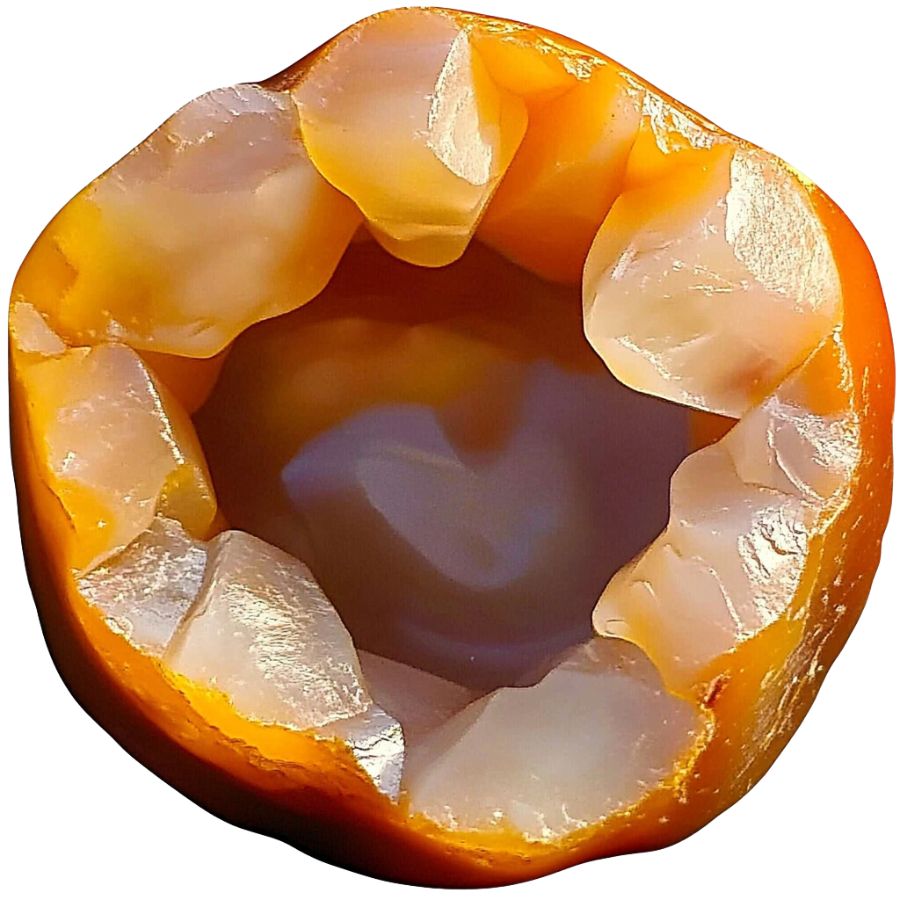
Carnelian geodes have vibrant orange to reddish-brown colors. They can be somewhat see-through, which makes them look even more interesting. The bright colors come from the iron in the stone.
These geodes stand out from other similar stones. They’re brighter than sard, which is usually darker and more brownish. And unlike agate, carnelian doesn’t have bands or stripes.
Carnelian has been popular for a long time. Ancient Egyptians and Greeks used it to make special rings. It’s tough enough for everyday jewelry.
Some people heat or dye carnelian to make its color even brighter. This makes it a favorite for both rock collectors and jewelry lovers.
Fluorite Geode
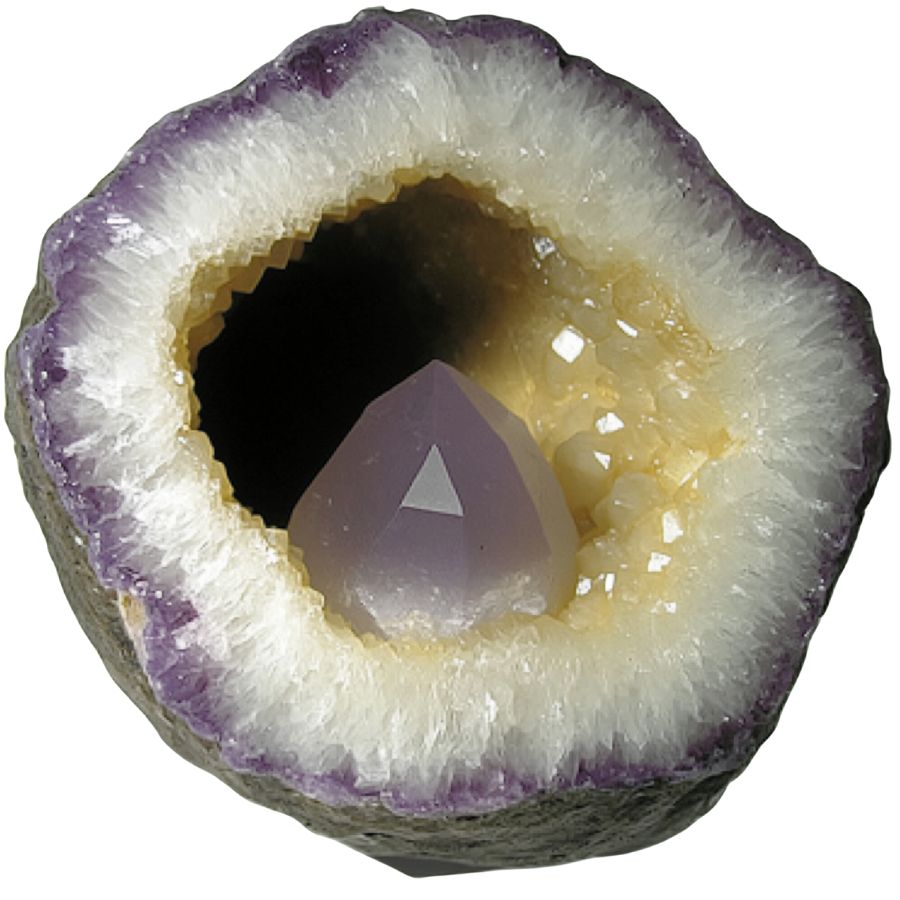
Fluorite geodes are like nature’s rainbow. They come in many colors – purple, green, blue, yellow, and sometimes even clear or black. When you open one up, you might see cube-shaped or eight-sided crystals inside.
What makes fluorite special is that you can often see more than one color in a single stone. This is different from many other geodes. Also, fluorite has a unique way of splitting when it breaks.
A cool fact: fluorite glows blue under ultraviolet light. This was first discovered back in 1852. Because of its many colors and this glowing ability, fluorite is sometimes called the “most colorful mineral in the world.”
Scolecite Geode
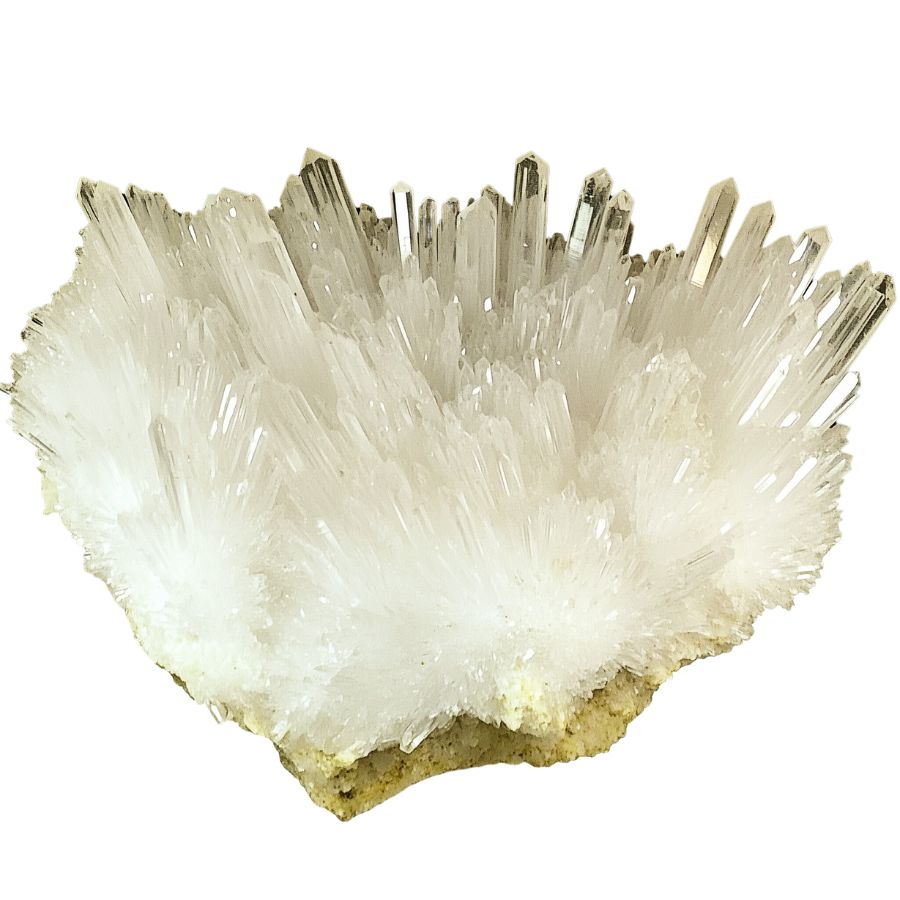
Scolecite geodes are like tiny crystal caves. They’re usually white or colorless, but sometimes you might find pink, yellow, or green ones.
What makes them special is the crystals inside. They look like thin needles or delicate hairs, all pointing out from the center.
These geodes are different from others because of their crystal shape. Instead of blocky or chunky crystals, scolecite has these fine, hair-like ones. This gives them a unique, delicate look.
Scolecite has an interesting property – it can hold a lot of water in its structure. This means it can absorb and release water easily. This makes scolecite useful in various ways, not just as a pretty rock to look at.
Apophyllite Geode
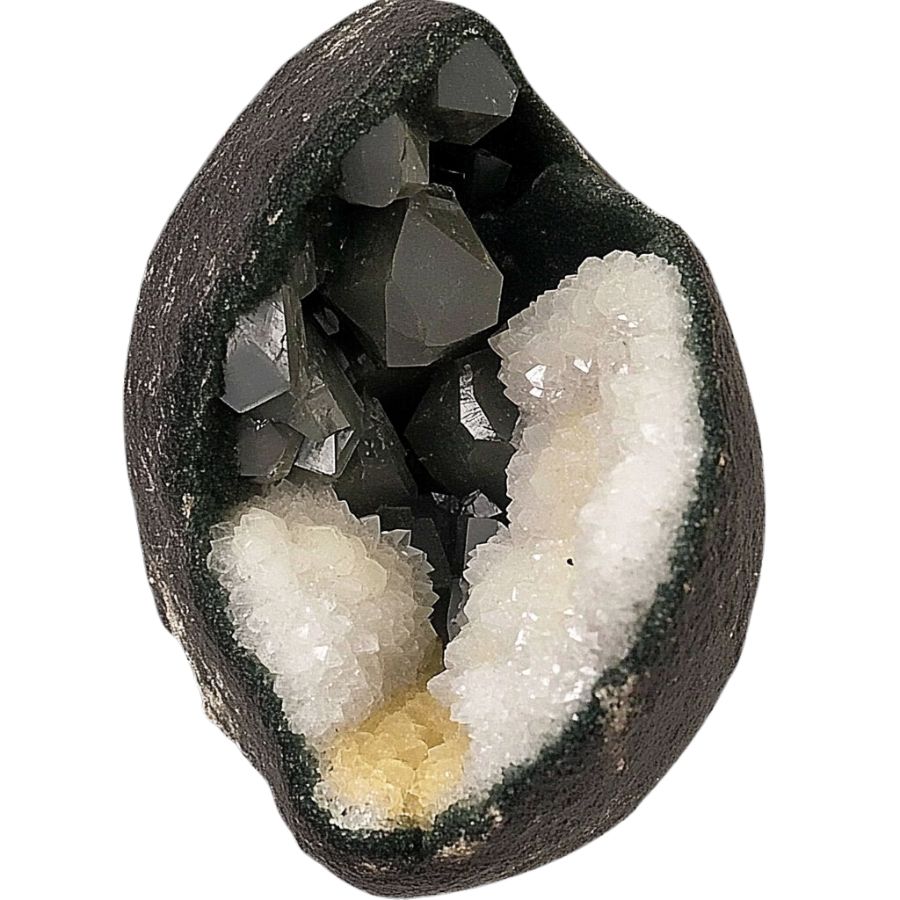
Apophyllite geodes are like nature’s disco balls. They often have dark or black crystals inside a hollow rock. These crystals can be see-through or slightly cloudy, with cube-like or flat shapes.
What makes apophyllite geodes stand out is how the crystals form. They grow in round clusters that look like tiny disco balls. This unique formation is rare and makes them special to rock enthusiasts.
Collectors really prize these “disco ball” clusters. They’re not common, which makes them valuable to people who love unusual rocks. The way apophyllite crystals catch and reflect light adds to their appeal, making them fascinating to look at and study.
What Rough Geode Looks Like
Identifying a rough geode might seem tricky, but with a few tips, you can spot one even if you’re not a rock expert. Here’s how you can do it.
Look for a Rounded Shape
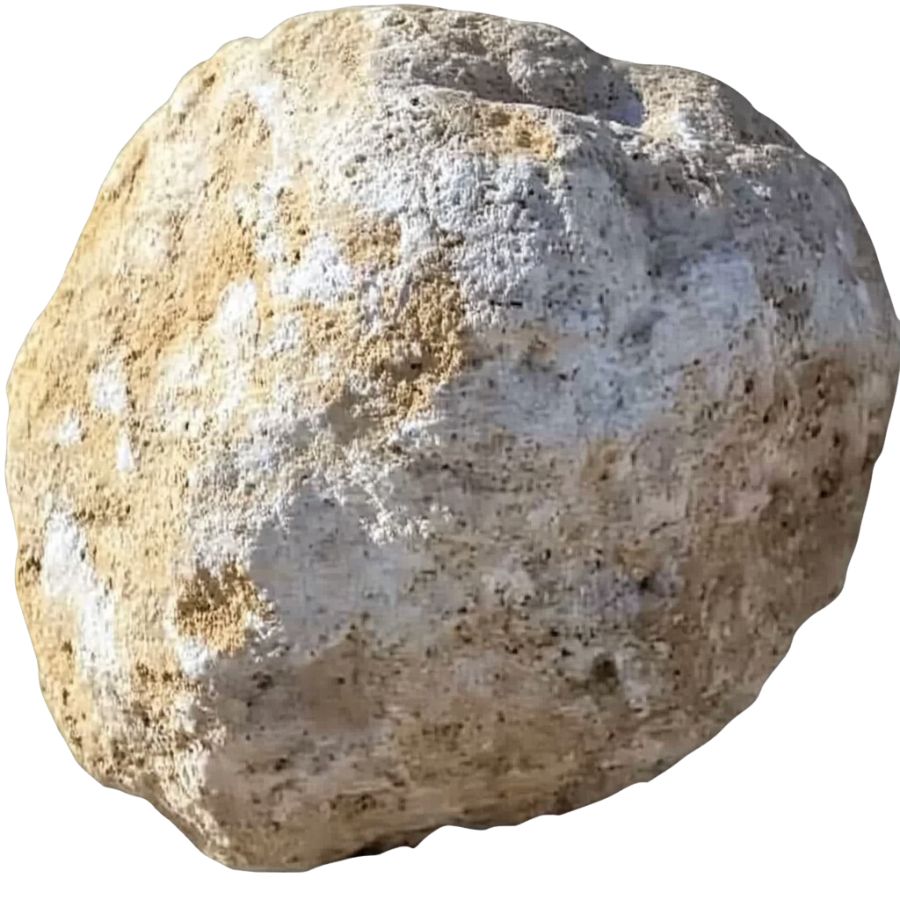
A rough geode often has a rounded or egg-like shape. It might not be perfectly round but look for a generally bulbous form.
When you’re out searching, skip the flat, jagged rocks. Geodes usually have smoother exteriors because they’ve been rolling around in rivers or other environments for a long time.
Check for a Dull, Bumpy Surface
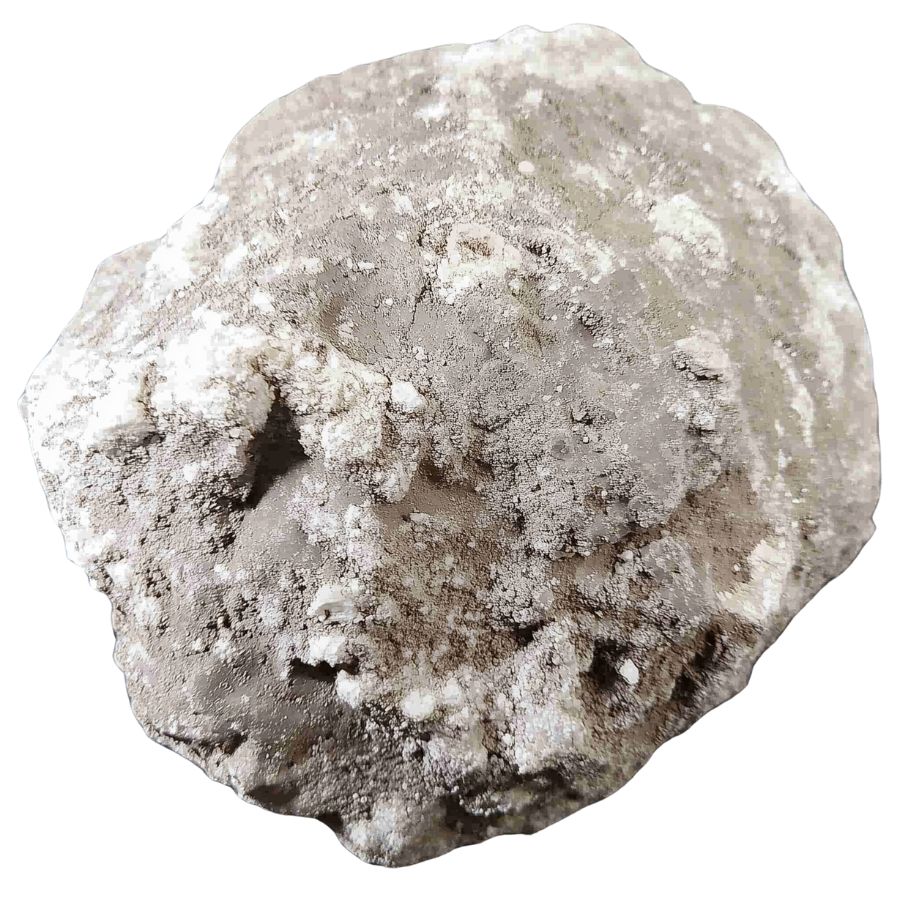
The outside of a geode isn’t usually shiny. Instead, it’s dull, bumpy, and a bit rough.
Imagine a potato or a clump of dirt with some bumps and dents. That’s how a geode might look before it’s cracked open.
The outside won’t give away much of what’s inside, so don’t be fooled by its ordinary appearance.
Test the Weight
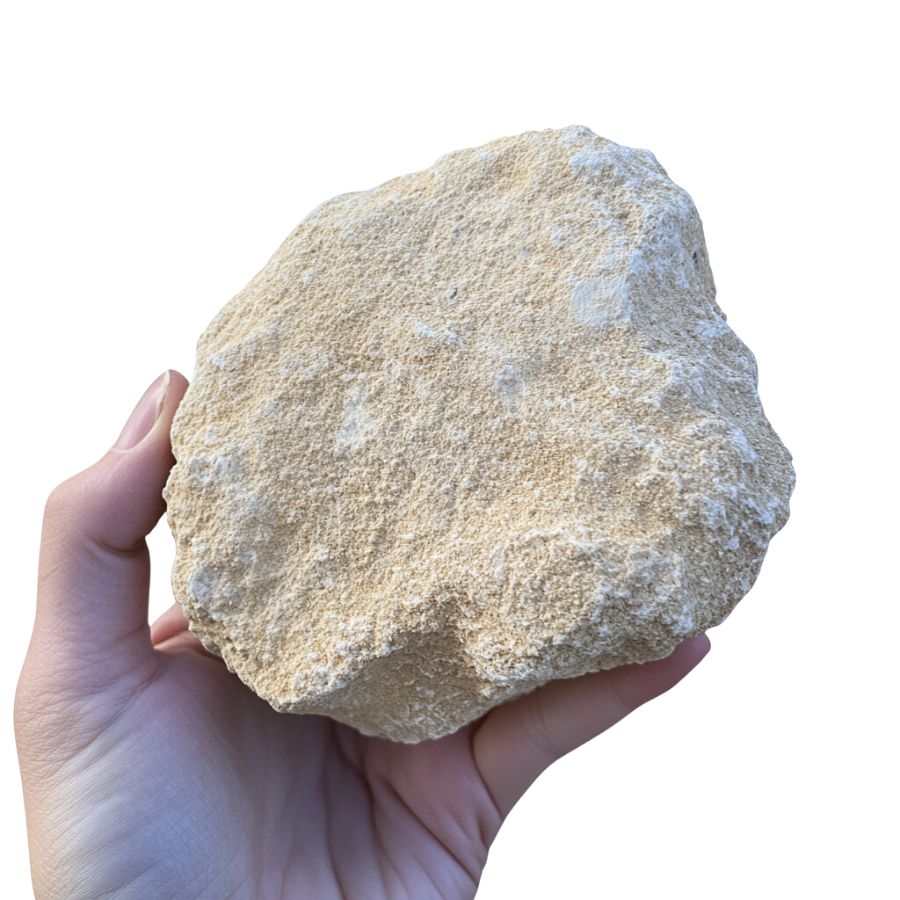
Pick up the rock. Does it feel lighter than it looks? That’s a good sign!
Geodes are hollow or partially hollow, which makes them lighter than solid rocks of the same size. If it feels unexpectedly light, you might have found something special.
Look for Tiny Crystals or Mineral Patches
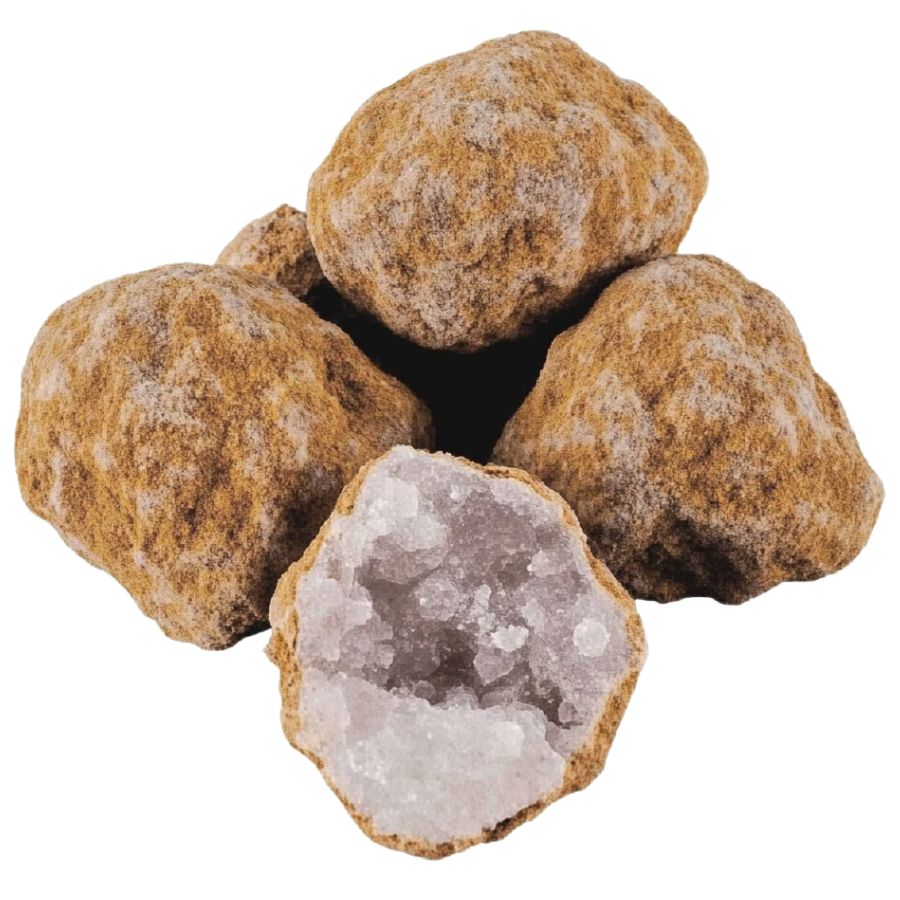
Sometimes, you can spot small crystals or mineral deposits on the outside. These could look like tiny sparkles or specks of color.
While the outside of a geode is usually dull, a little peek of what’s inside might show through. Keep an eye out for these hints, especially if you’re in a known geode-rich area.
Tips on Where to Look
Once you get to the places we have listed below there are some things you should keep in mind when you’re searching:
Explore Riverbeds and Streams
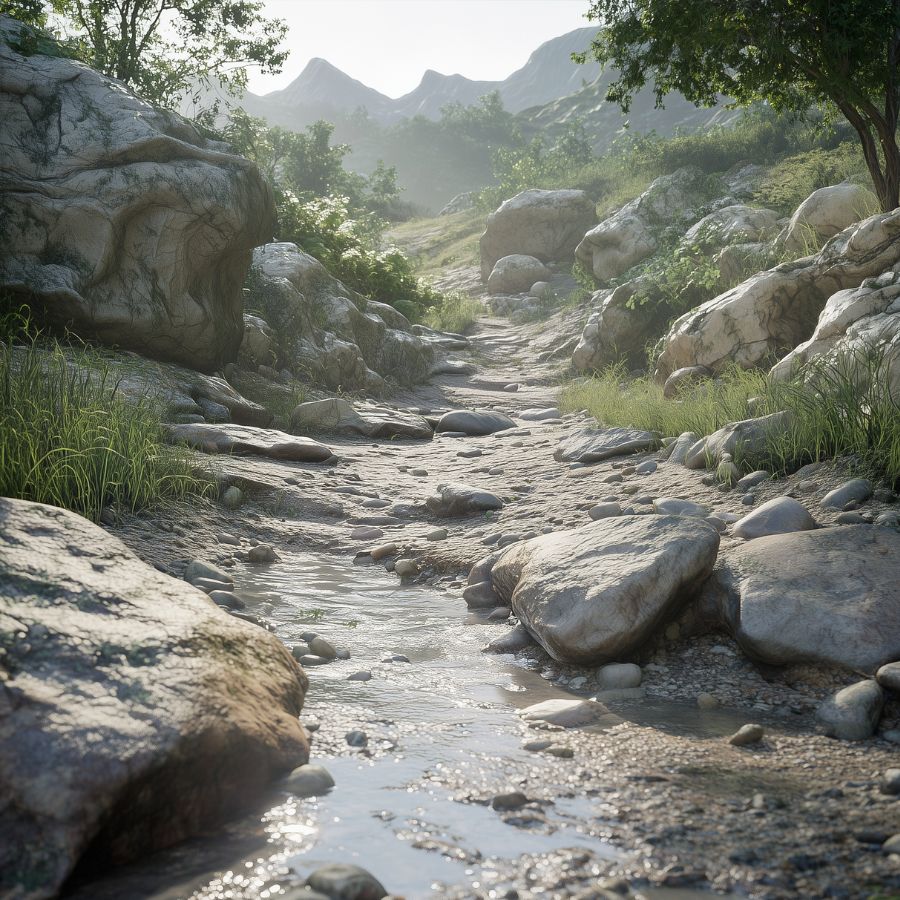
Geodes often form in riverbeds or streams. Water flow smooths out their rough edges and deposits them in these areas.
When exploring, focus on gravel bars or the edges of rivers where rocks naturally gather.
Search in Sedimentary Rock Layers
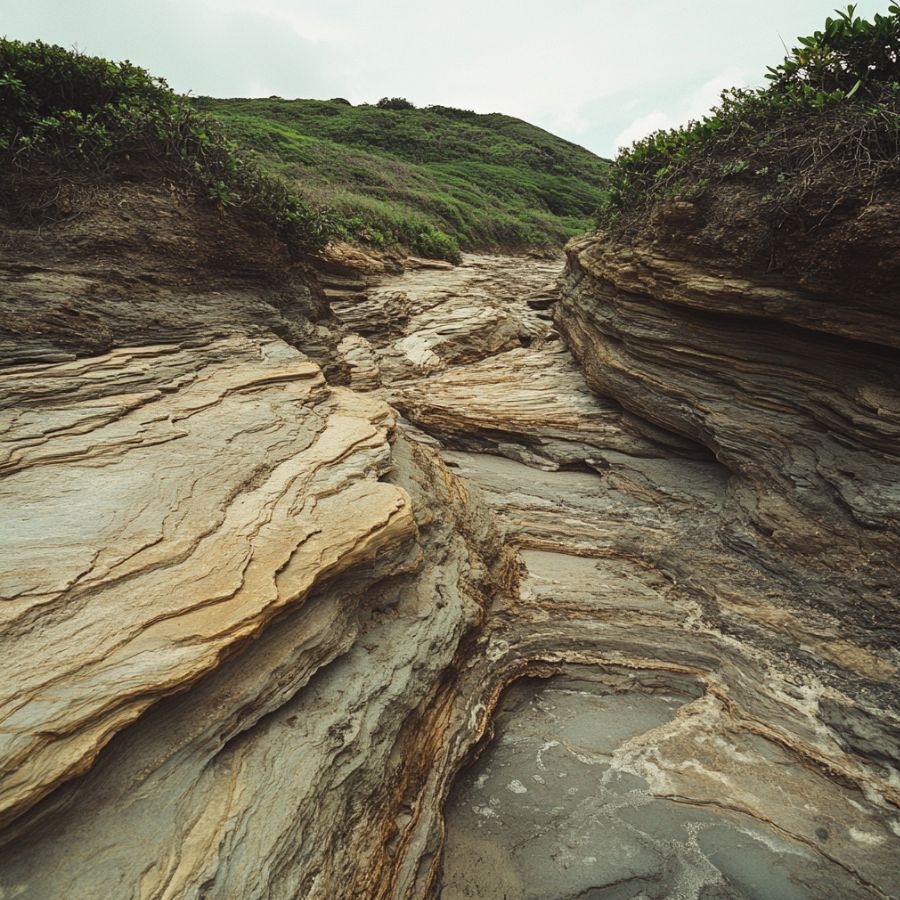
Sedimentary rocks, like limestone, are prime spots for geodes. These rocks form in layers over time, trapping minerals inside.
Look for areas where sedimentary rocks are exposed, such as cliffs or road cuts.
Visit Old Mines or Quarries
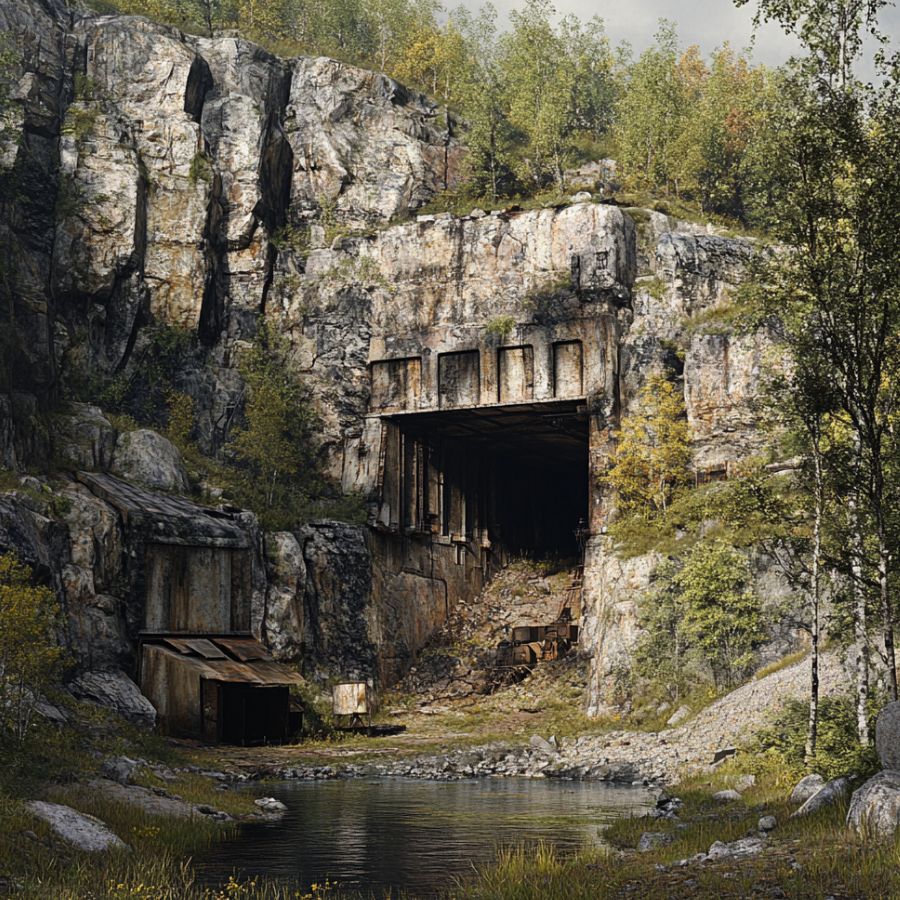
Abandoned mines and quarries are excellent spots for geode hunting.
Workers often missed geodes while digging for other materials. Explore the tailings or leftover rock piles for hidden treasures.
Explore Hills and Rock Outcrops
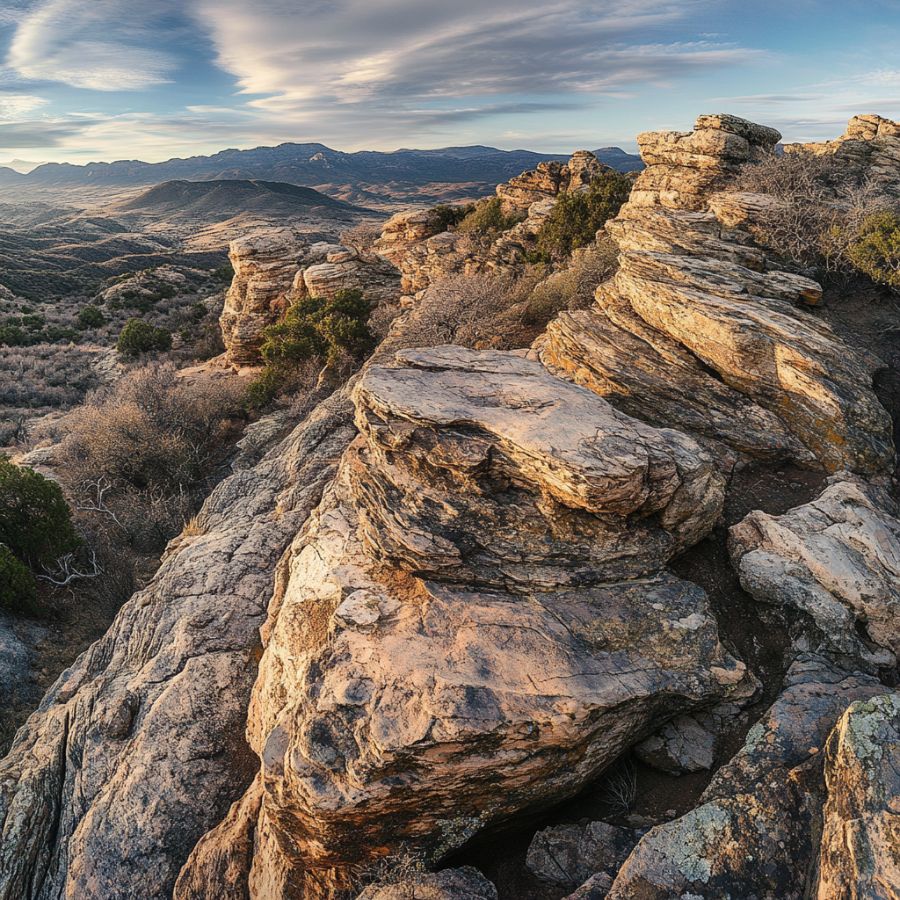
Hills and rocky outcrops often reveal geodes. As erosion wears away the softer rock, it exposes the harder geodes.
Look for areas with exposed rocks and keep an eye out for rounded shapes.
The Types of Geodes You Can Find in Illinois
There are tons of different varieties of this natural wonder all over the world, and how much a geode is worth may depend on it. In Illinois, here are some of the ones you’ll find:
- Amethyst geodes
- Aragonite geodes
- Barite geodes
- Calcite geodes
- Chalcedony geodes
- Chalcopyrite geodes
- Dolomite geodes
- Malachite geodes
- Marcasite geodes
- Pyrite geodes
- Quartz geodes
- Selenite geodes
- Smithsonite geodes
- Sphalerite geodes
The Best Places To Find Geodes in Illinois
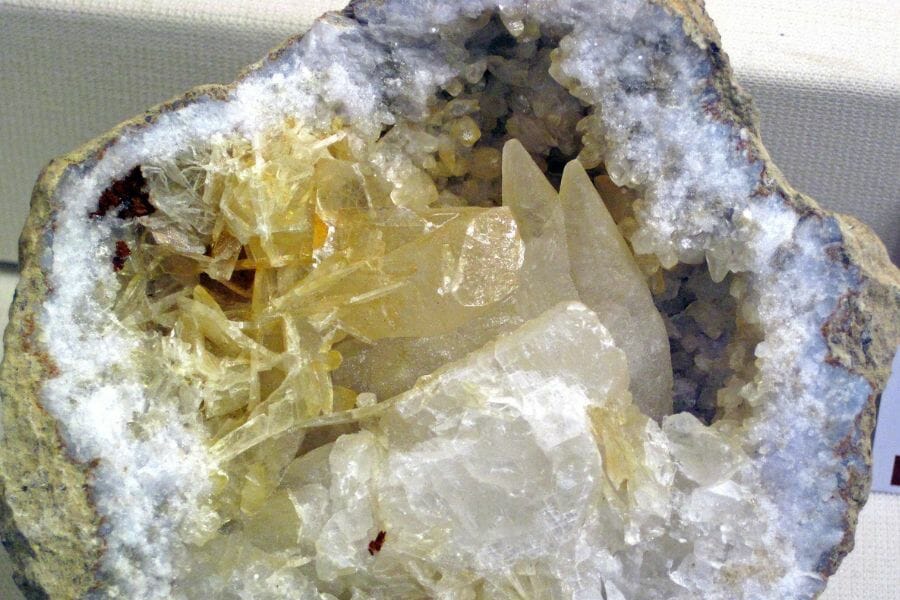
We’re thrilled to share with you the best places where you can find Illinois geodes. And while you might already know about the great places to mine gems in Illinois, not all of them have geodes. The locations we’re sharing with you below may not be the most well-known, but they sure are the best options to find geodes in Illinois!
Always Confirm Access and Collection Rules!
Before heading out to any of the locations on our list you need to confirm access requirements and collection rules for both public and private locations directly with the location. We haven’t personally verified every location and the access requirements and collection rules often change without notice.
Many of the locations we mention will not allow collecting but are still great places for those who love to find beautiful rocks and minerals in the wild without keeping them. We also can’t guarantee you will find anything in these locations since they are constantly changing.
Always get updated information directly from the source ahead of time to ensure responsible rockhounding. If you want even more current options it’s always a good idea to contact local rock and mineral clubs and groups
Keokuk Geode Beds
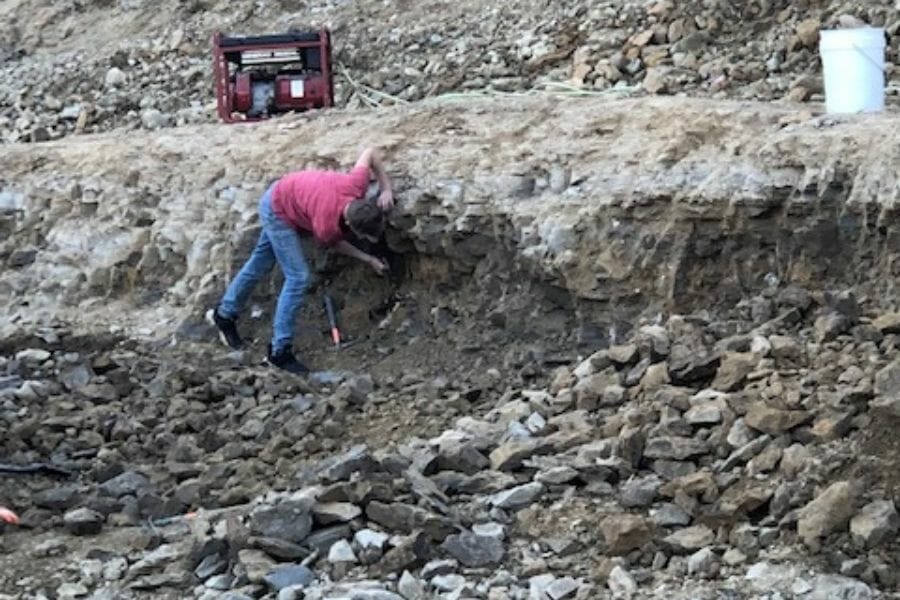
Keokuk Geode Beds is an absolute treasure trove for rockhounds and geology enthusiasts. It’s located in the Mississippi River Valley, about 4 hours southwest of Chicago. To get here, you have to take some back roads, but trust us, it’s worth it!
The terrain is pretty rugged and hilly, with lots of trees and vegetation. You have to be careful where you step, because there’s a lot of poison ivy and thorny plants around. This place’s geology is also super interesting— the geodes are formed in the Mississippian-age Warsaw Formation, which is full of limestone and dolomite. The geodes themselves are pretty big, some as large as a basketball, so you have to crack them open with a hammer or rock pick to see the crystals inside!
But before you bring home any of your finds, make sure to check the updated guidelines from the State of Illinois.
Where we found geodes on Keokuk Geode Beds
The largest amount and variety of geodes in the Keokuk Geode Beds can be found in the outcropping of the Mississippian lower Keokuk bed, which is located within a 70-mile radius of the intersection of the Mississippi and Des Moines Rivers. The primary source of these geodes is the stream beds here. However, you have to get permission from the landowners before accessing the area for geode hunting.
DON'T MISS OUT ON ANY GREAT FINDS!
While you're out searching for Geodes you're going to find a lot of other interesting rocks and minerals along the way. The last thing you want to do is toss out something really interesting or valuable. It can be easy to misidentify things without a little guidance.
We've put together a fantastic field guide that makes identifying 140 of the most interesting and valuable rocks and minerals you will find REALLY EASY. It's simple to use, really durable, and will allow you to identify just about any rock and mineral you come across. Make sure you bring it along on your hunt!
Hancock County
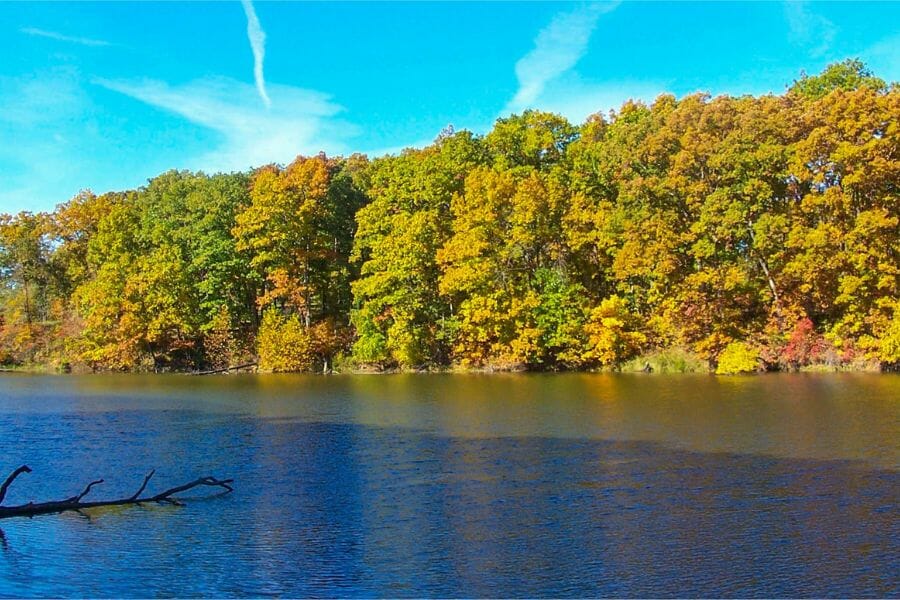
With its rolling hills, lush green fields, and gorgeous vistas as far as the eye can see, Hancock County is without a doubt the heart of the Midwest. Its terrain is pretty amazing with flat areas and hilly and rocky parts. There’s a bunch of forests and nature preserves, too, so if you’re into hiking or birdwatching, you’ll love it here!
When it comes to geology, this county is pretty interesting. It’s situated on the edge of the Illinois Basin, which is full of coal and oil deposits. And let’s not forget about the geodes! You can find some of the best ones here.
To get here by driving, you’d have to travel for about 3 hours from Chicago or St. Louis. Since the terrain can be pretty rugged, make sure you have a good vehicle if you’re gonna go off-road. Oh, and watch out for the potholes, they can be a doozy! Visit these areas as well for an abundance of crystals you can find in Illinois.
Where we found geodes in Hancock County
This county is endowed with amazing geodes, so while you can find it all over here, we listed down some of the best spots that you may want to check first:
- The area gravels, streams, and pits of Niota
- The area stream and creek tributaries of Nauvoo
- At the bed of Railroad Creek
- The area gravels of Hamilton
Calhoun County
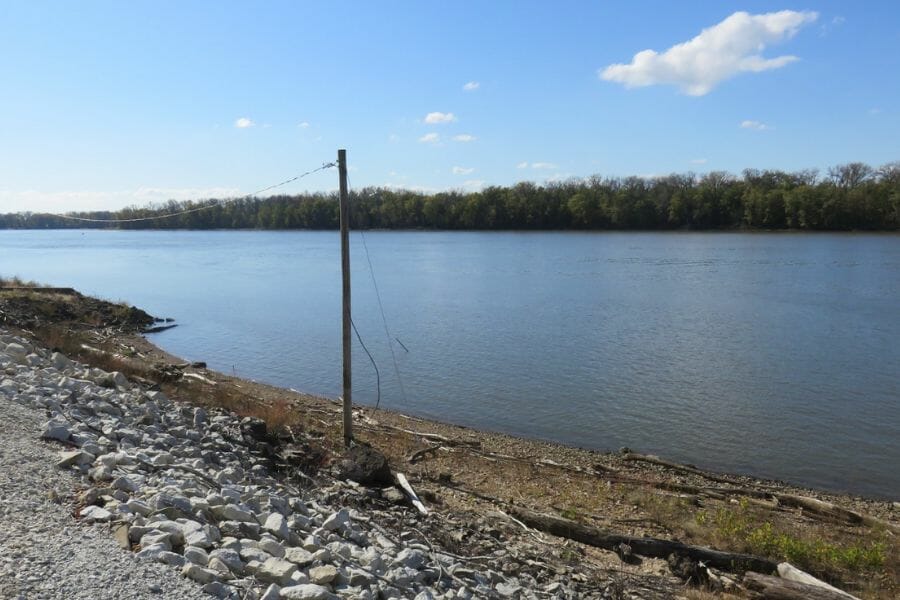
Located in the southwest corner of our state, Calhoun County is surrounded by the Mississippi River on three sides, making it a haven for water-loving folks! Aside from water, rolling hills and valleys and dense forests abound here. It’s hilly and rocky in some places, so you’ll want to bring some good hiking boots if you plan on doing any exploring.
As for geology, Calhoun County is located in the Illinois Basin and is home to some unique rock formations, including limestone, shale, and sandstone. There are also plenty of interesting geodes and fossils to be found here, so make sure to keep your eyes peeled!
Getting here can be a bit of a trek, depending on where you’re coming from. But if you’re in the mood for a scenic drive, it’s well worth it!
Where we found geodes at Calhoun County
The shores of the Mississippi River, in the Warsaw formation that surrounds
Warsaw, Hamilton, and Nauvoo in western Illinois, is the best area where you can find cool geodes here. A few examples of what you can get your hands on are Chalcedony, Amethyst, and Quartz geodes. Such diverse finds!
Crystal Glen Creek
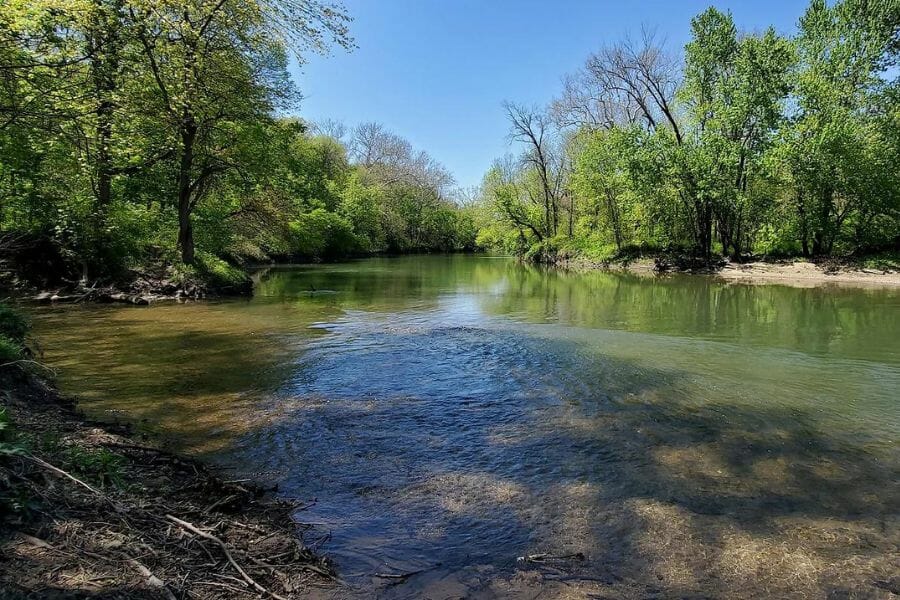
A usual favorite spot for outdoor adventures in our state, Crystal Glen Creek is located in the western part of Illinois. Little as it may seem, this creek packs a big punch in terms of scenery and geological diversity. The terrain can be a bit tricky to navigate in some spots, with lots of rocks and boulders in the creek bed. But the views you’ll get along the way are worth it!
The creek itself is pretty small, but it’s home to some amazing geological formations. You’ll find all sorts of cool geodes and crystals in the creek bed, which makes it a popular spot for rockhounds and geology enthusiasts.
If you want to go here, it’s pretty easy if you’re in the surrounding area. Just hop on the highway and follow the signs to the nearest town. From there, it’s just a short drive to the creek. But be warned, the roads can be pretty winding and narrow, so be sure to take it slow and steady.
Where we found geodes in Crystal Glen Creek
The extensive exposure South of town on Crystal Glen Creek is where you can find some of the most amazing geodes here, including Aragonite, Barite, Calcite, Dolomite, Goethite, Pyrite, Quartz, Selenite geodes.
Pike County
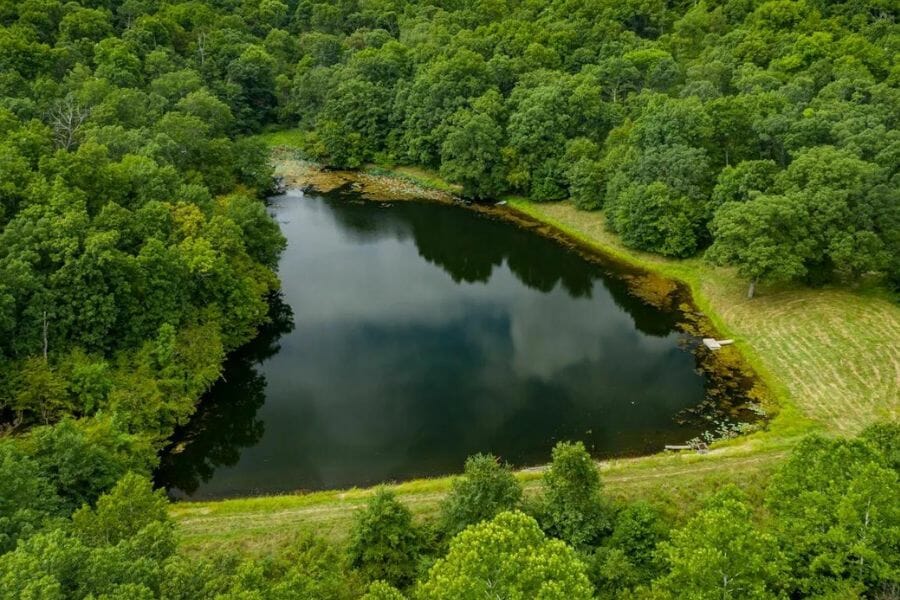
Pike County is a rural county in the west-central part of our state. It’s full of rolling hills, forests, and plenty of rivers and creeks that’ll amaze anyone who visits here. This county is pretty diverse, with a mix of farmland and forests. There are plenty of little towns and hamlets scattered throughout, but for the most part, it’s a quiet and peaceful place to be.
Pike County’s terrain can be a bit hilly in some spots, so if you’re planning on doing some hiking or exploring, make sure you bring some good shoes. In terms of geology, it’s home to a lot of limestone and sandstone, which can be seen in the rock formations throughout the area. Of course geodes are abundant here!
Driving is the best way to get here. Just be warned that the roads can be pretty bumpy and full of potholes, so be sure to take it slow and steady. And watch out for deers, because they’re everywhere!
Where we found geodes in Pike County
If you’re in this county, chances are you’re near a geode which is so cool! But if you want to be sure you’ll find one, we recommend going to the McKee Creek where you can find Calcite and Sphalerite geodes.
Other Great Places To Dig For Illinois Geodes
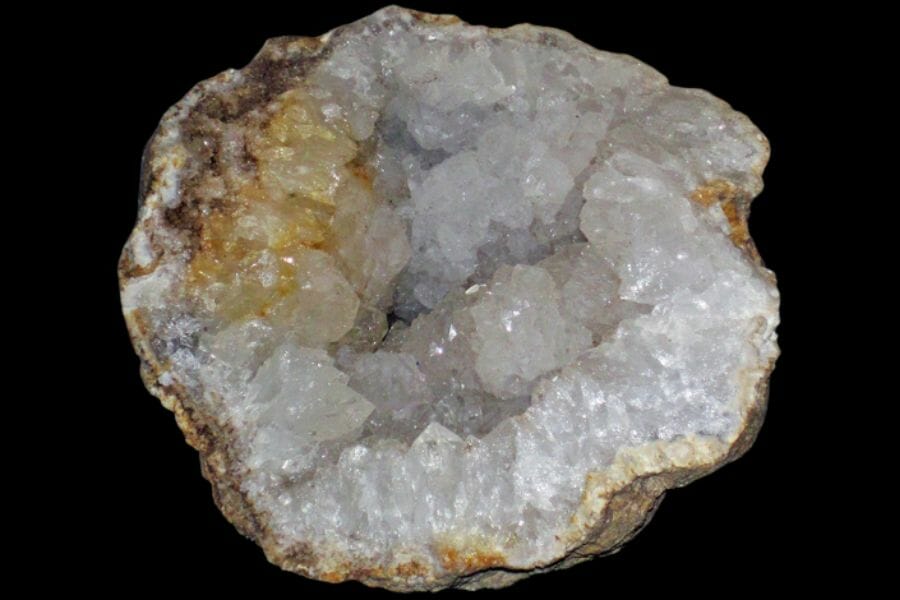
The places we discussed above may be our favorite spots to find geodes here, but we have tons of other places to recommend to you. To make it easier for you, we’ll list them down by county. For places where we put, “county wide”, we will provide more specific recommendations in the succeeding sections.
Our recommendations by county
| County | Location |
| Calhoun | County wide |
| Calhoun | Shores of the Mississippi River in the Warsaw formation |
| Hamilton | Banks and tributaries of Mississippi River |
| Hancock | County wide |
| Hancock | Area gravels of Hamilton City |
| Hancock | Bed of Railroad Creek |
| Hancock | On the Dallas Creek of Dallas City |
| Hancock | The extensive exposure South of town of Crystal Glen Creek |
| Hancock | Area stream and creek tributaries of Nauvoo |
| Hancock | Area gravels, streams, and pits of Niota |
| Hancock | Dewdrop Diamond Creek |
| Hancock | Tyson Creek |
| Hancock | Spillman Creek |
| Hancock | Hamilton Quarry |
| Henderson County | County wide |
| Henderson | On the Dallas Creek of Dallas City |
| Henry | County wide |
| Henry | Keokuk Geode Beds |
| Pike | County wide |
| Pike | McKee Creek |
Common Geode-Hunting Questions
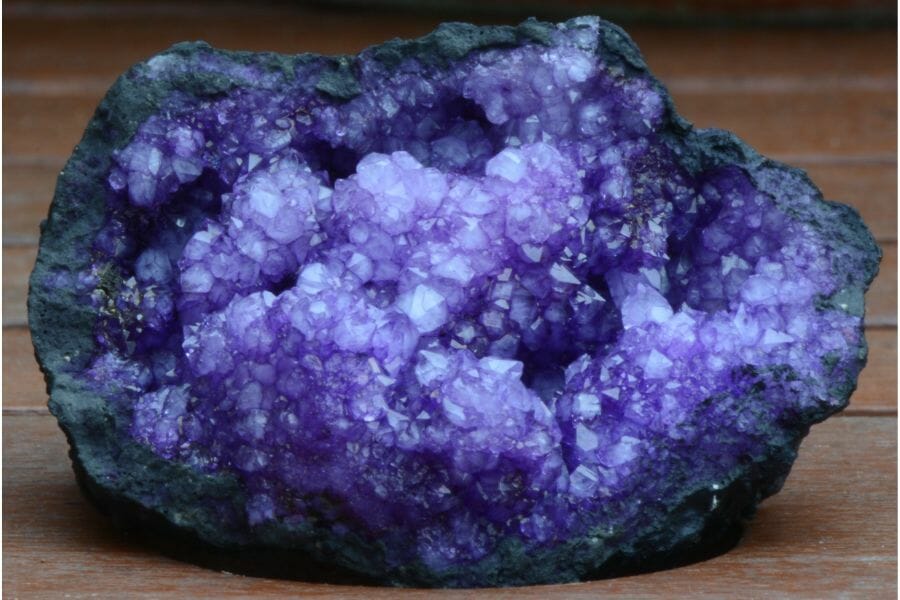
We found some frequently asked questions when people search for geodes in Illinois. And we figured you might have these questions, too, so we know they are worth answering here:
Where can you find amethyst geodes in Illinois?
If you’re the kind of geode collector who dreams of finding an amethyst geode, then Illinois is your lucky place! You can find light purple amethyst geodes on the shores of the Mississippi River in the Warsaw formation of Calhoun County and on the banks and tributaries of Mississippi River of Hamilton County.
Is it illegal to collect geodes in Illinois?
Just make sure that you are abiding by the local collecting laws of our state and you’re good to collect geodes in Illinois! If there are local regulations on government land, make sure you are obeying it. Lastly, always get permission before you explore any private land here.
The Best Places To Buy Geodes In Illinois
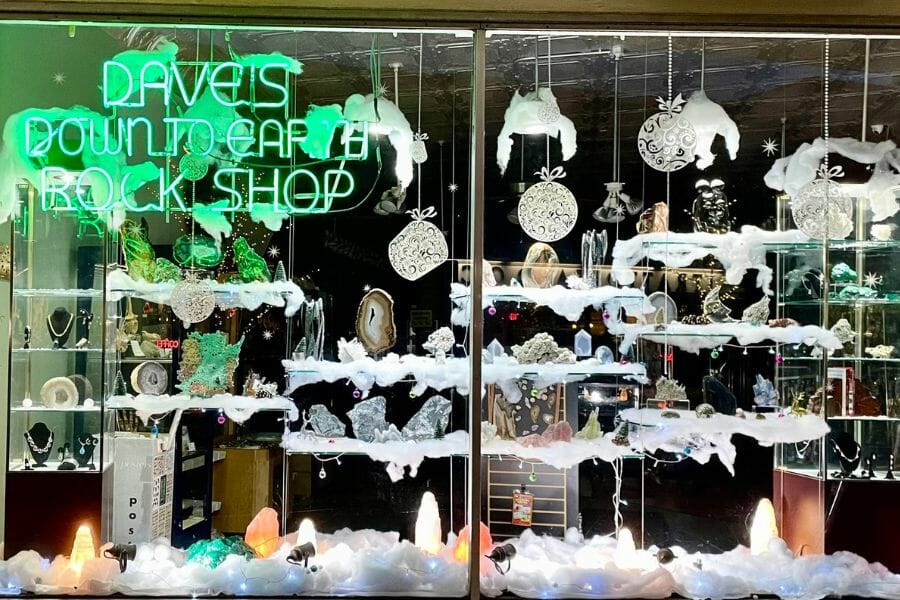
Getting your hands on geodes may be one of the best feelings in the world if you’re an enthusiast or collector, but the process of getting there might not be for everyone. So if you’re one of those who are looking for geodes without having to break some serious sweat, we’ve got you covered, too!
Here are some of our favorite local shops where you can find and buy geodes of your choice:
- Dave’s Down to Earth Rock Shop – 711 Main St. Evanston, IL 60202
- Amazon – Yes! You’ll be surprised at the wide range of choices for geodes that Amazon has. You can even find whole kits to break open your geodes with geodes ready to be cracked open.
- Jacob’s Geode Shop and Mine – 823 E Co Rd 1220, Hamilton, IL 62341
- Lizzadro Museum of Lapidary Art – 1220 Kensington Road, Oak Brook, IL 60523
- High Ho Gems, Inc. – 19622 Wolf Rd Unit 1, Mokena, IL 60448
- Vickers Geodes – 511 S 9th St, Hamilton, IL 62341
- Crystal Earth Rock Shop – 1125 S Main St J, Lombard, IL 60148
Additional places to find geodes in nearby states
Check out our guides for nearby states if you’ve already tried all of our suggestions above or if you’re planning a trip outside of the state:
If you have any recommendations for our list please leave a comment below!

